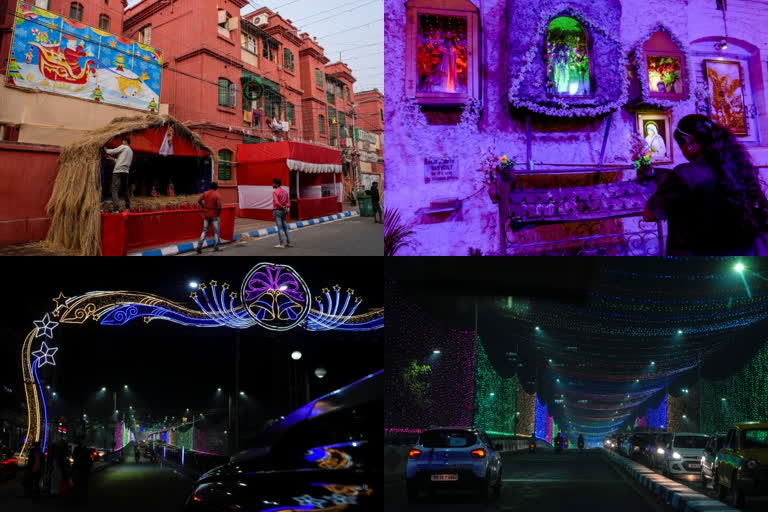Howrah (West Bengal): On Christmas day, many in the bustee of Pilkhana in this industrial city of Howrah, twin to the megapolis of Kolkata, remember Dominique Lapierre, the author who put the bustee on the global map with his book `City of Joy.' The well-known French author spent many months working for the poor in the narrow lanes of Pilkhana, around 3-4 kilometres from Howrah Railway Station alongside Christian missionaries and became a popular figure here.
"Dominique Lapierre had come here as a messenger of God to help downtrodden people in this `busti' (slum)," said Nashim Ahmed, a former Howrah Municipal Corporation councillor from Pilkhana, once considered the second largest slums in the country after Mumbai's Dharavi.
In a moving passage in his book,`City of Joy', Lapierre had described Christmas in Pilkhana and contrasted it with the glitter and razzmatazz of celebrations at the posh Park Street with its upmarket restaurants like Peter Cat and Flury's. Deep in the alleyways of the city of Joy (Pilkhana), Christmas was no less lively. Garlands of lights and streamers had been strung up Loudspeakers spread the sound of carols and hymns, the book described.
A rabbit's warren of serpentine narrow lanes, Pilkhana which Lapierre described as the `City of Joy', a name now used as a tagline for Kolkata, remains a slum which has been given a facelift. The Seva Sangh Samiti where Lapierre at one time helped out, is still the main centre for medi-care in this area.
Lapierre was a "true gentleman and a person with full of hope", said Reginald John, who is the CEO of the local philanthropic organisation, 'Seva Sangh Samiti', working for the poor for over 50 years in the slums of Pilkhana, located along the Grand Trunk Road in the northern part of Howrah.
John was among those who had brought the French author to Pilkhana 'busti' and introduced him to life of poverty-stricken people living here in the 1970s and 1980s. "Pilkhana and its poor people, deprived of basic amenities and proper social infrastructure such as school and health centre, were essentially the fulcrum of his bestselling book 'The City of Joy'. He helped several organisations with the royalties he got for his book. But Seva Sangh Samiti did not receive any financial aid from him as per its governing body's decision.
"However, his contribution to the welfare of the slum dwellers was immense. He showered love and peace and was also moved by the warmth he received from locals. It gave me joy working and interacting with him," John told PTI while explaining how the French philanthropist had overcome all odds to extend charitable services to the improvised people.
Septuagenarian social worker, Amanullah Mohammad, who was born and brought up in this slum, said, "I saw Lapierrie donning a casual shirt and a pant and relentlessly working for the poor at a time when the Pilkhana slum remained waterlogged in most months of a year. The French author who passed away earlier this month is described by his admirers as a man who could easily mingle with people and had a big heart.
He worked here for all irrespective of caste, creed, religion and language. This is a lesson for all of us," said Amanullah. Firoze Ahmed, who worked with another civil society organisation United Brothers Association that used to get financial help from the French author, described "Dominique da" as a "kind-hearted man and an attentive listener to children and women who were facing hardships".
"United Brothers undertook several humanitarian services in Pilkhana and surrounding areas with financial assistance from Lapierre but it now becomes sick. But the organisation carries on with the legacy of the celebrated writer," the 62-year-old social worker said. From congested tin thatched houses to dingy and waterlogged streets in the 1970s and 1980s, Pilkhana has progressed somewhat over the years.
Some multi-storeyed concrete houses have sprung up and sanitation has improved, but the locality still lacks adequate social infrastructure.
However, despite the opprobrium of being described as a slum, "joy is still alive among people of Pilkhana", John said. (PTI)



